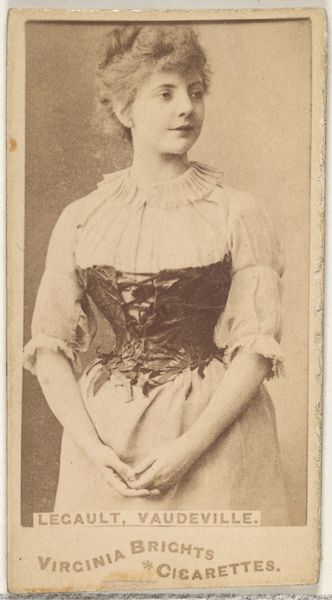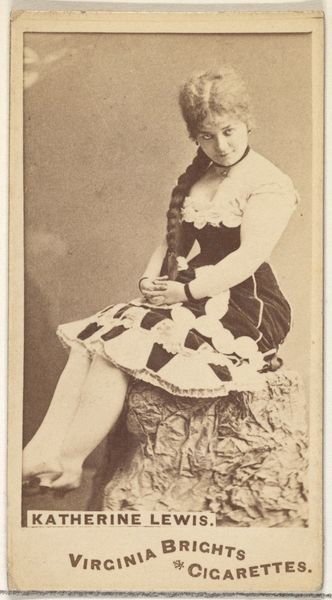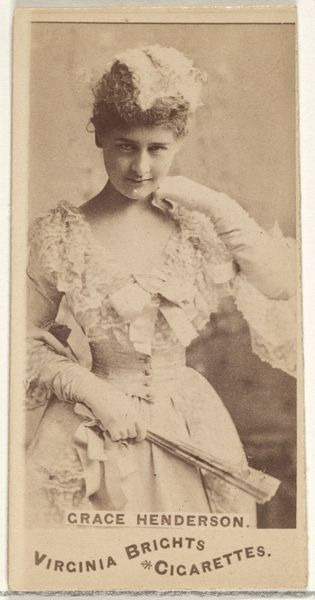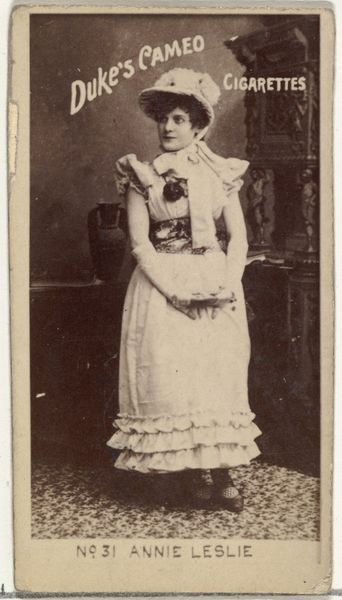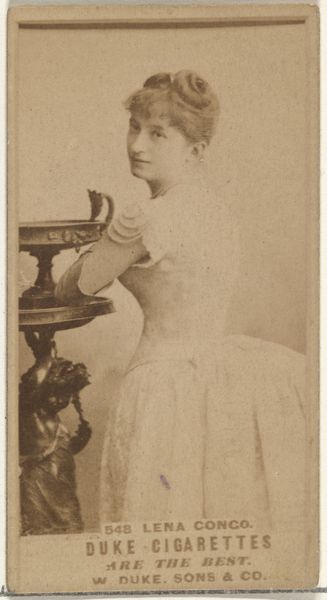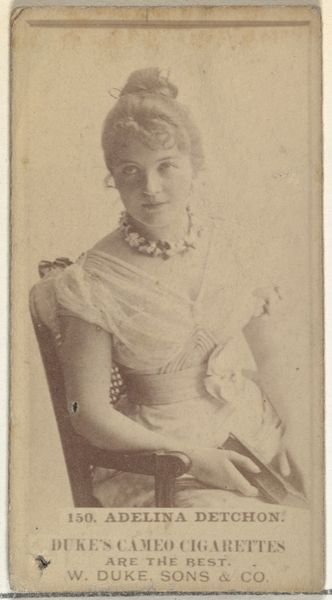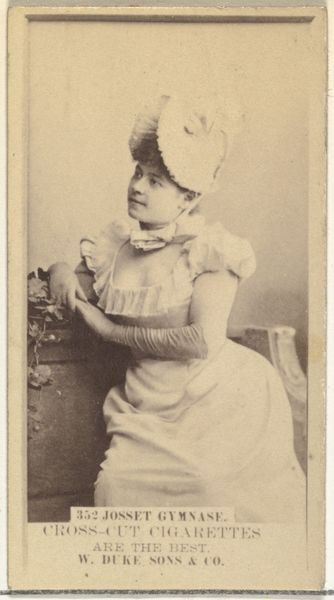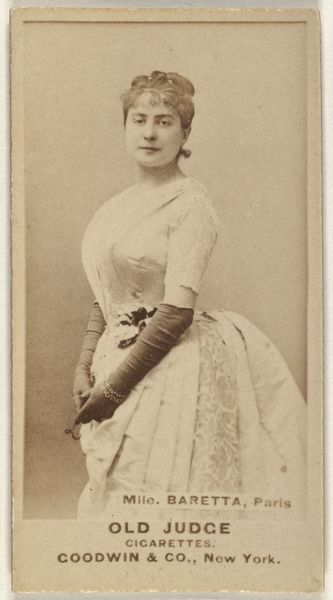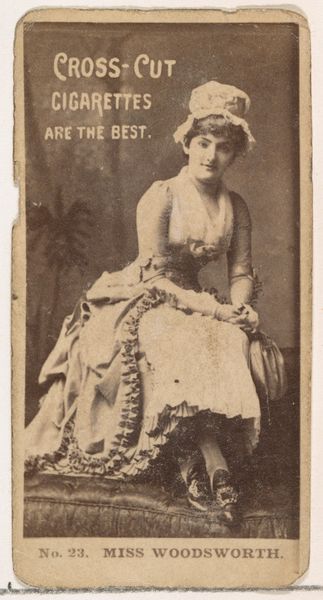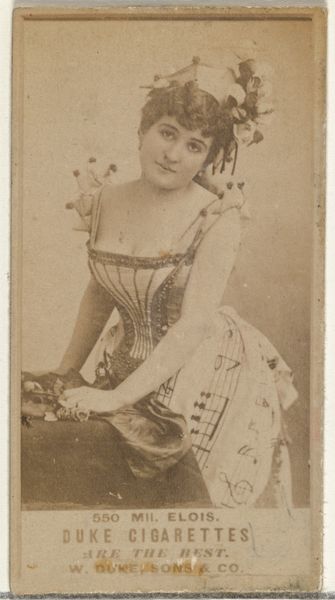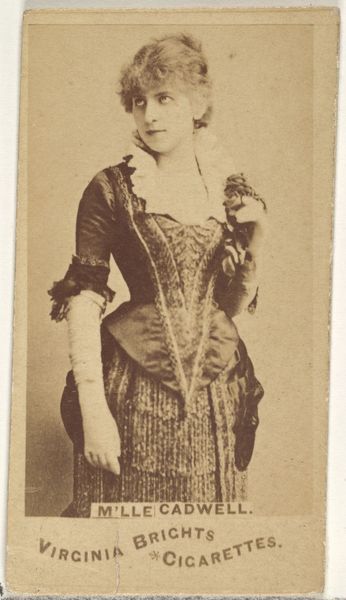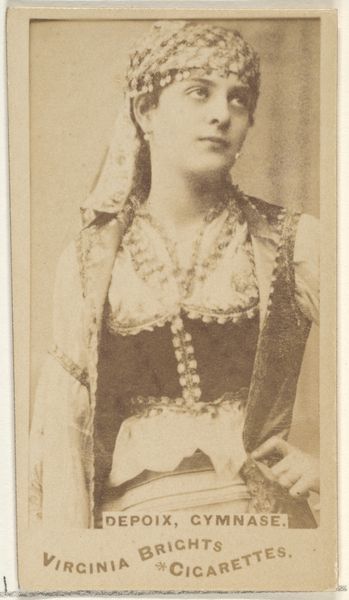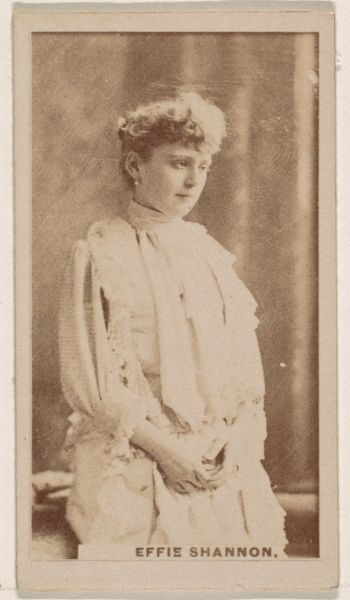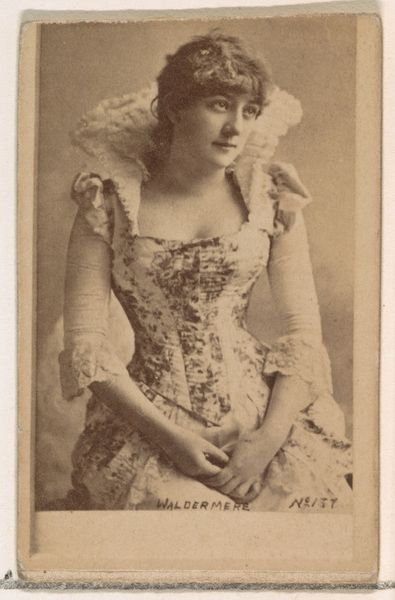
Miss Thorndike, from the Actors and Actresses series (N45, Type 1) for Virginia Brights Cigarettes 1885 - 1891
0:00
0:00
drawing, print, photography
#
portrait
#
drawing
# print
#
photography
Dimensions: Sheet: 2 3/4 x 1 3/8 in. (7 x 3.5 cm)
Copyright: Public Domain
Curator: This photographic print is titled "Miss Thorndike, from the Actors and Actresses series (N45, Type 1) for Virginia Brights Cigarettes" and was made sometime between 1885 and 1891 by Allen & Ginter. It’s currently held at the Metropolitan Museum of Art. Editor: The first thing that strikes me is how incredibly detailed and almost luminous it is, especially given it’s a small commercial card. It has this ethereal, dreamlike quality about it, yet you can also clearly see the craftsmanship involved in the photographic process itself, as well as her lovely garment. Curator: Absolutely. We have to consider the context. This wasn't made as 'high art' but as a mass-produced insert for cigarette packets. The means of production, the photography and printing techniques had to be highly efficient. It's fascinating how Allen & Ginter combined photography, drawing, and printing to create something so intricate for commercial purposes. What’s most remarkable, really, is the labor that went into these collectible cards. Editor: Precisely! Think about the rise of celebrity culture and advertising. These cards are a fantastic snapshot of the public’s fascination with actors and actresses during this period. Miss Thorndike wasn’t just a subject; her image was carefully curated to sell a product and an aspirational lifestyle. The inclusion of her image in a mass-produced item elevated both her and Virginia Brights cigarettes simultaneously, becoming intertwined in the public eye. Curator: And her attire - we see how carefully constructed the ruffles are in the dress, and consider the lace. The availability of certain dyes and fabrics also would influence the image. Her jewelry, too, would reflect the changing material desires of the middle class. The image becomes an amalgamation of manufacturing processes, social strata, and commerce all working together. Editor: It all highlights the relationship between consumer culture and the performance of identity. It’s a window into a moment where fame was commodified. Thanks to advertising and printed images that circulated these celebrities were more visible. The effect these items would have had would shape tastes, behaviors and culture across society. Curator: So, on the surface, it might just appear to be a simple portrait, but it is the convergence of labor, celebrity, and consumerism captured in a tiny, elegant rectangle. Editor: It shows us the evolution of the business and presentation of public persona itself! A very interesting point!
Comments
No comments
Be the first to comment and join the conversation on the ultimate creative platform.
